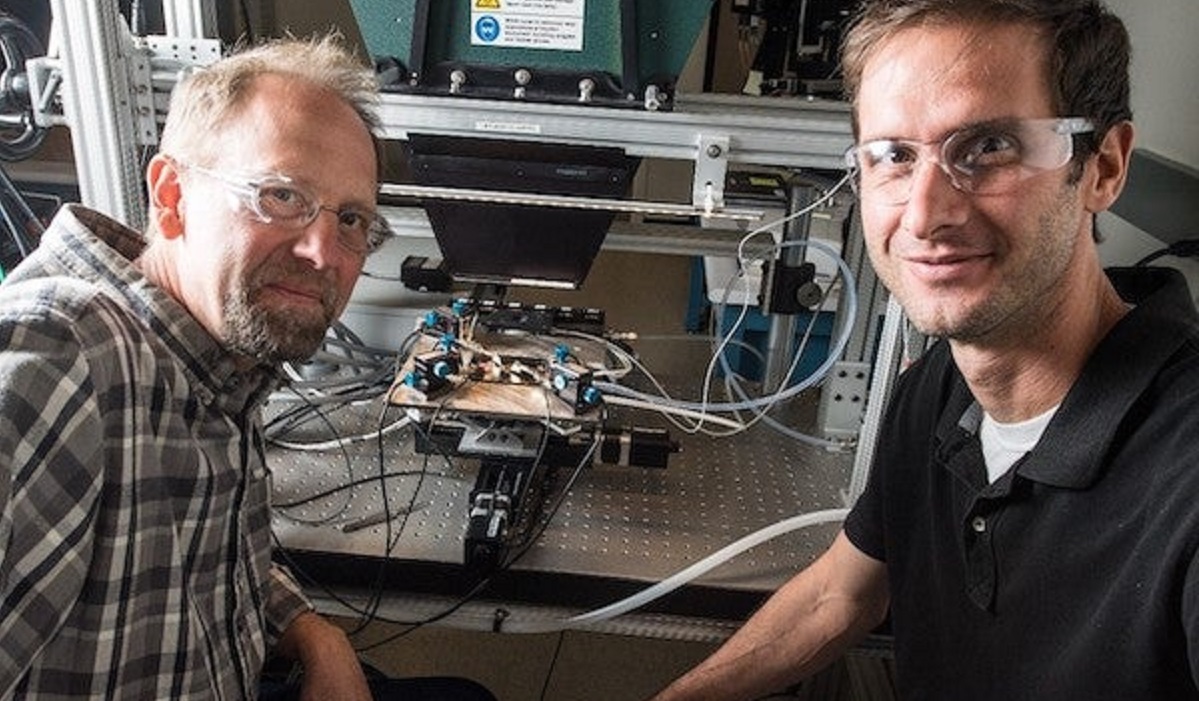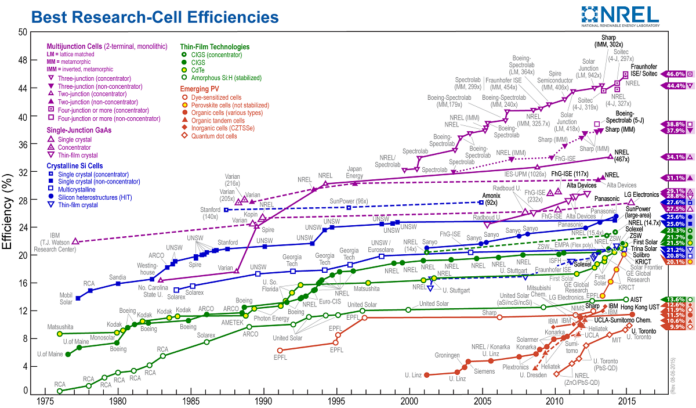Scientists at the National Renewable Energy Laboratory (NREL) in Golden, Colorado have designed a solar cell that has broken two world records for efficiency. The cell has reached over 47% efficiency under “concentrated illumination” and 39% for “one-sun illumination,” both high marks above what many thought was possible. Ultimately, this technological breakthrough means the cells can generate more renewable energy with less materials.

While the six-junction III-V technology underlying these new cells is likely too costly at this time to be put to use in everyday rooftop applications, the new cell has great potential for application in concentrated solar panel arrays. Under concentrated solar panel arrays, huge mirrors are used to concentrate light, which is then shown down on expensive, but highly efficient and productive solar panels.
Ryan France, co-author and a scientist at NREL explained: “One way to reduce cost is to reduce the required area and you can do that by using a mirror to capture the light and focus the light down to a point. Then you can get away with a hundredth or even a thousandth of the material, compared to a flat-plate silicon cell. You use a lot less semiconductor material by concentrating the light. An additional advantage is that the efficiency goes up as you concentrate the light.”
If you’ve ever driven between Los Angeles and Las Vegas, you know what I mean.
https://gty.im/1148861964The creators of the new cell believe they can still achieve greater efficiency in solar cells. In fact, they believe, breaking the 50% efficiency barrier is “very achievable.”
This innovation marks yet another breakthrough in solar technology and the potential for renewables to power our society in a way that is both economically preferable to fossil fuels, while also helping combat climate change and environmental destruction more broadly. However, there is still much work to be done. Scientists like those at NREL will not only need to continue innovating and creating more efficient renewables, but perhaps even more importantly, find ways to make the cost of scaling them around the world economically viable.

Peter Schulte
Purpose Coach
Bellingham WA, USA / Lummi & Nooksack lands
Purpose statement: I reveal a world of beauty and goodness
Good News Newsletter
The latest laws, policies, science, and technology leading the way toward a brighter future